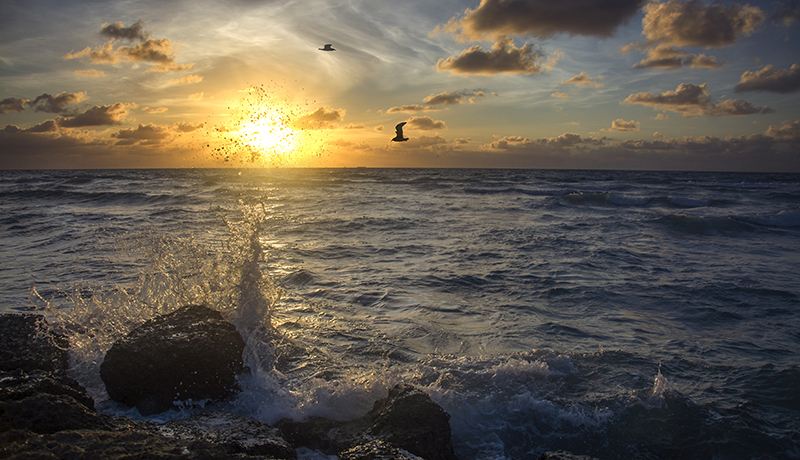

The Rock Jetty at 27th Street in Miami Beach
Photo Courtesy of L Lawson
Foamy waves, miles of sand and the ubiquitous sun make Miami an eminently Instagrammable city, but for photographer L Lawson, its beauty isn’t merely skin-deep.
“For me, Miami is the cultural capital of the Americas. There is no other city in the Western Hemisphere where North American, South American and Caribbean heritages are simultaneously celebrated on this scale,” says Lawson, who also goes by @thelightrecord on Instagram. (You may have seen his brilliant aerial shots on @ForbesTravelGuide or from our Vancouver Instagram guide.)
Lawson is a recent Los Angeles transplant, but he lived in Miami for five years before making the move. “I remember the very first time I arrived at Miami International Airport in 2004,” he says. “The first words I heard were not ‘Welcome to Miami’ or ‘Hello,’ or anything in English, for that matter. I was greeted with, ‘Hola, papi,’ by an older Cuban woman who worked in the airport terminal, as if there weren’t any other possible way to say hello.”
Adds Lawson, “At the time, I had no idea that I would eventually marry a first-generation Cuban American in that very same city and that, ‘Hola, papi,’ would at some point become far more normal than, ‘Hello.’”
Lawson’s favorite Miami activities include enjoying an early breakfast outside on Lincoln Road and riding his bicycle to a new place to photograph the sunrise. His top sunset spot: the rock jetty at 27th Street in Miami Beach (see above photo). “For a while,” he says, “I lived just three blocks from here, so I never had an excuse to miss the sunrise.”
He also can’t resist the pull of the ocean: “Miami is an aquatic city, calling to be explored via the various waterways, canals and bays. If you haven’t seen the city from the water, you have failed to fully experience it.”
Experience the city through Lawson’s eyes with his Miami Instagram guide below.
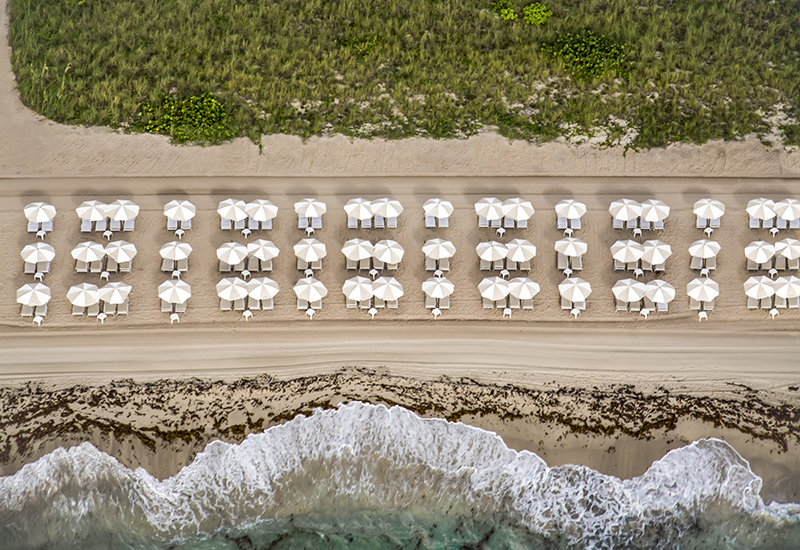
Photo Courtesy of L Lawson
“North Beach and Surfside provide alternative beach options away from the party scene of South Beach without sacrificing any of the tropical beauty.”
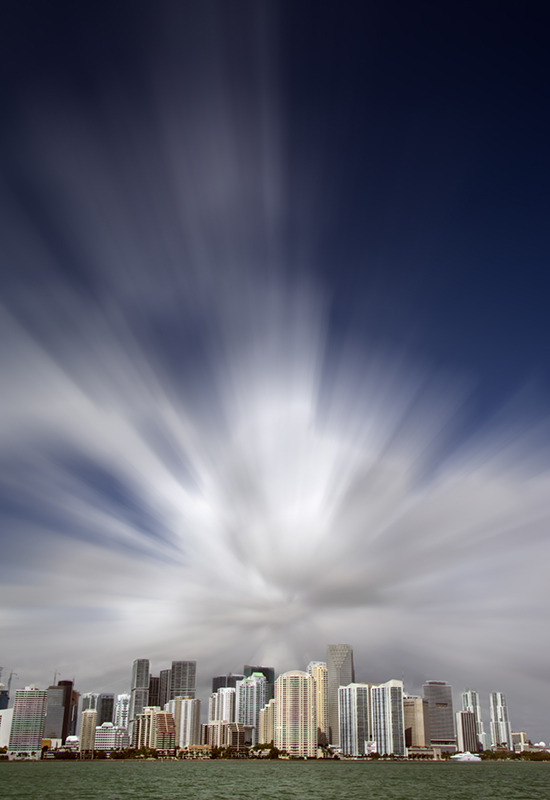
Photo Courtesy of L Lawson
“It is little known that Miami has a water taxi system, and it is therefore highly underutilized. Being a lifelong opponent to our cultural dependence on automobiles, I had a monthly pass that I used just for exploring on my free time. This photograph of downtown Miami was taken from the water taxi while en route from Key Biscayne to Bayside.”
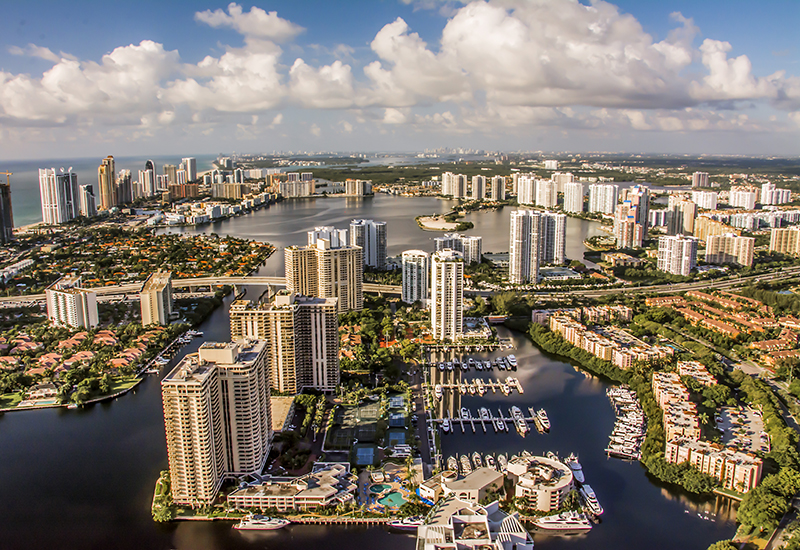
Photo Courtesy of L Lawson
“From an aerial perspective, Miami is one of the most dynamic cities to photograph. In this shot, the William Lehman Causeway cuts through Aventura to intersect with Collins Avenue and the beautiful beach. Downtown Miami and South Beach linger in the far distance.”
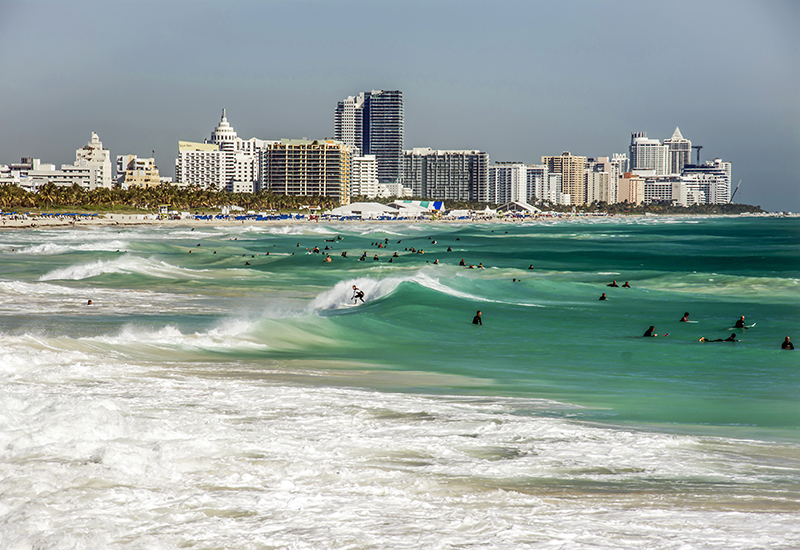
Photo Courtesy of L Lawson
“In August 2014, the South Pointe Pier opened and finally allowed a safe walkway out over the water. With a zoom lens, I photographed this surfer wave-riding to the backdrop of the famous South Beach hotels. The tallest building in the center is the marvelous Forbes Travel Guide Five-Star Setai, Miami Beach.”
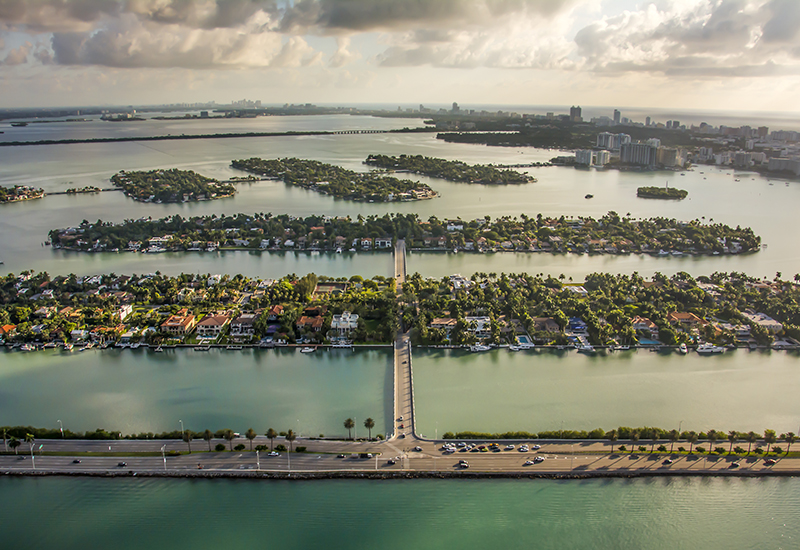
Photo Courtesy of L Lawson
“The MacArthur Causeway (foreground) stretches 3.4 miles across Biscayne Bay and links Miami Beach to the mainland. It is the only way to access Star, Hibiscus and Palm islands via car. These three locales are most famous for housing Miami’s biggest celebrities. In the distance, the Venetian and Julia Tuttle Causeways can also be seen from this aerial shot take from a helicopter.”
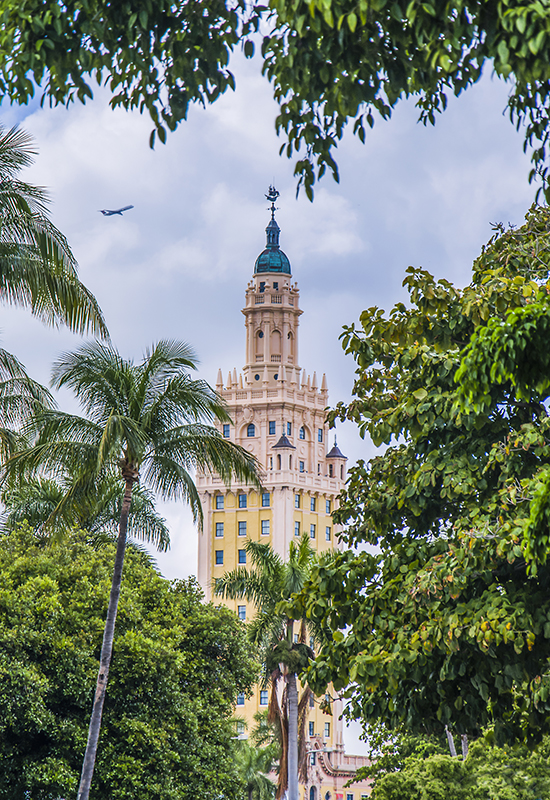
Photo Courtesy of L Lawson
“In the heart of downtown Miami since 1925, the Freedom Tower has long been an icon of the city. It is built in the Spanish Colonial Revival style and is most known for having been a reception center for Cuban refugees from 1962 until 1974. Among those refugees was my mother-in-law, who recalls spending three nights there with her mother and four sisters before being directed to Chicago. The family only lasted a few winters in Chicago before deciding to move to Miami, where most of them still reside.”
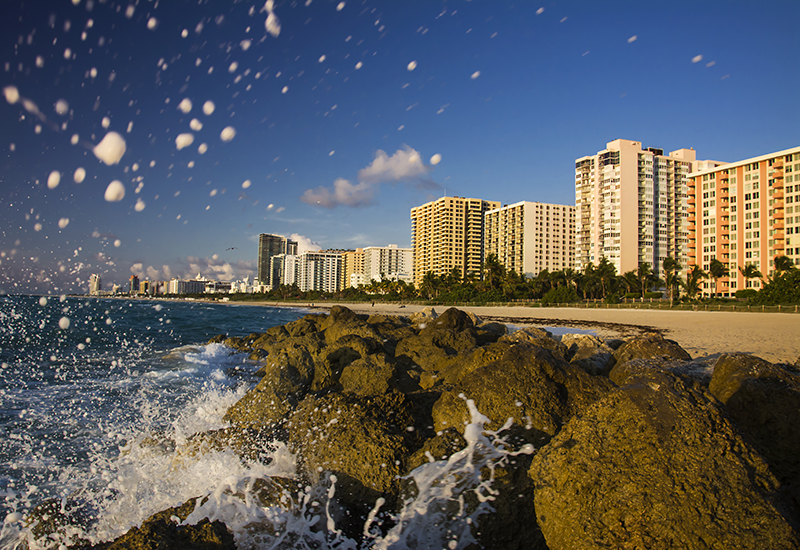
Photo Courtesy of L Lawson
“The colors commonly found in Miami’s Art Deco architecture and art are inspired by the stunning sunrises.”
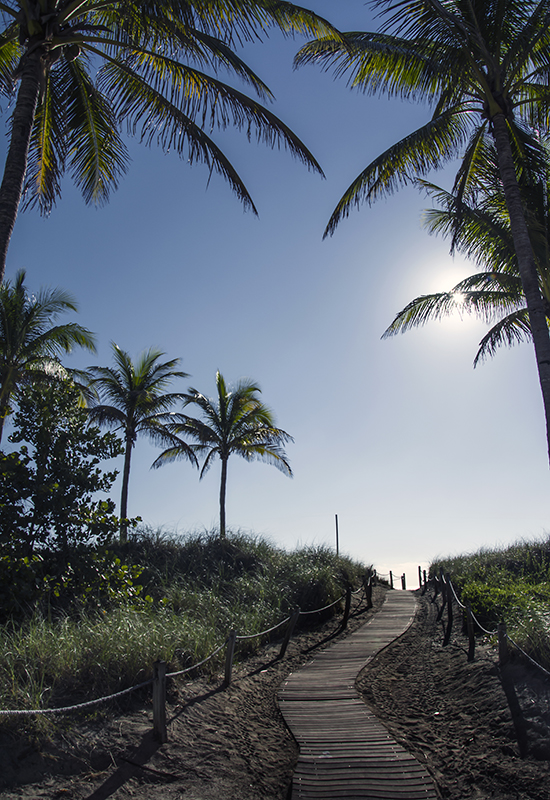
Photo Courtesy of L Lawson
“Between 1975 and 1980, the United States Army Corps of Engineers and the Florida Department of Environmental Protection fortified the City’s eastern shoreline by using offshore sand to nourish the beaches and construct a levee for erosion control and storm protection. In the mid-’80s, the sand dune was vegetated by FDEP to improve its protective function, creating the dunes that we see today in this photo. In the ’60s, erosion became so bad that the water approached the level of where rows of hotels currently are.”
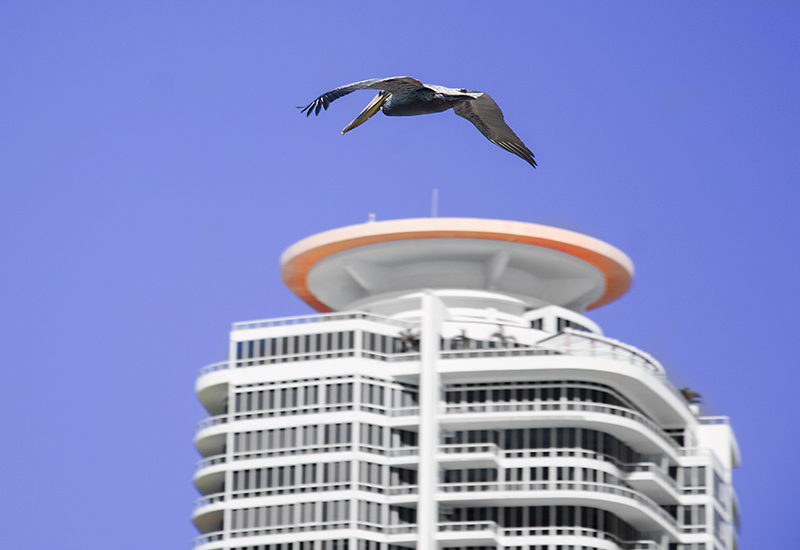
Photo Courtesy of L Lawson
“Brown pelicans breed throughout South Florida, primarily in mangrove islets. They seem a bit clumsy while not in flight, but these large birds are majestic when they spread their wings and are generally not afraid of humans.”
